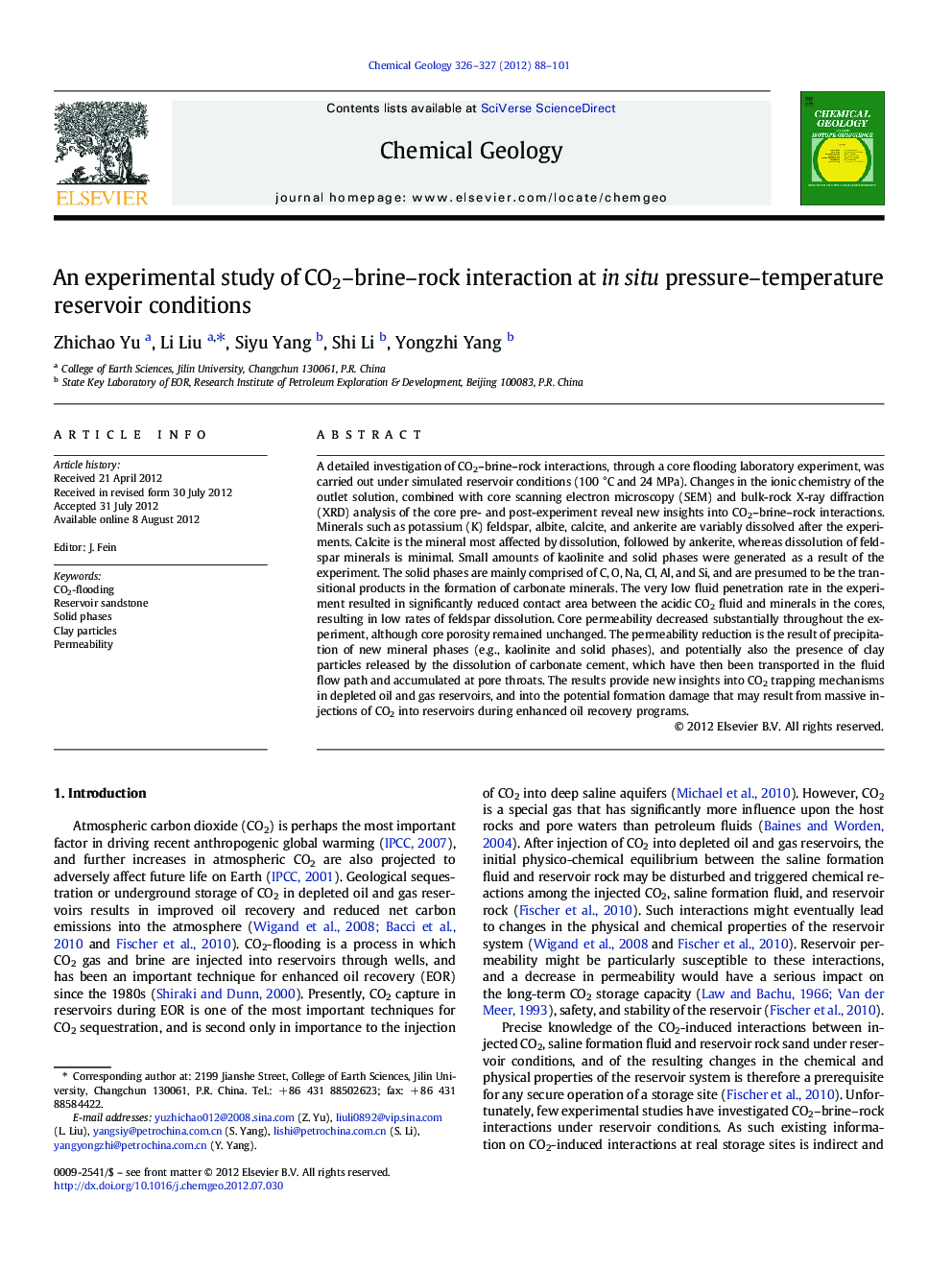| Article ID | Journal | Published Year | Pages | File Type |
|---|---|---|---|---|
| 4699280 | Chemical Geology | 2012 | 14 Pages |
A detailed investigation of CO2–brine–rock interactions, through a core flooding laboratory experiment, was carried out under simulated reservoir conditions (100 °C and 24 MPa). Changes in the ionic chemistry of the outlet solution, combined with core scanning electron microscopy (SEM) and bulk-rock X-ray diffraction (XRD) analysis of the core pre- and post-experiment reveal new insights into CO2–brine–rock interactions. Minerals such as potassium (K) feldspar, albite, calcite, and ankerite are variably dissolved after the experiments. Calcite is the mineral most affected by dissolution, followed by ankerite, whereas dissolution of feldspar minerals is minimal. Small amounts of kaolinite and solid phases were generated as a result of the experiment. The solid phases are mainly comprised of C, O, Na, Cl, Al, and Si, and are presumed to be the transitional products in the formation of carbonate minerals. The very low fluid penetration rate in the experiment resulted in significantly reduced contact area between the acidic CO2 fluid and minerals in the cores, resulting in low rates of feldspar dissolution. Core permeability decreased substantially throughout the experiment, although core porosity remained unchanged. The permeability reduction is the result of precipitation of new mineral phases (e.g., kaolinite and solid phases), and potentially also the presence of clay particles released by the dissolution of carbonate cement, which have then been transported in the fluid flow path and accumulated at pore throats. The results provide new insights into CO2 trapping mechanisms in depleted oil and gas reservoirs, and into the potential formation damage that may result from massive injections of CO2 into reservoirs during enhanced oil recovery programs.
► Feldspars, calcite, and ankerite were dissolved during the CO2-flooding experiment. ► The very low permeability of the core resulted in low rates of feldspar dissolution. ► Kaolinite and solid phases were precipitated after CO2-flooding experiment. ► Core permeability changed markedly after experiment while porosity did not change.
